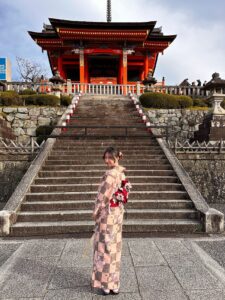 Taylor Moore | Academic Year 2023-2024
Taylor Moore | Academic Year 2023-2024
Back in November of last year, I did a takeover (link here) where some friends and I tried on kimonos and walked around the cultural capital of Japan: Kyoto. A lot of people have worries before coming to Japan concerning what is considered cultural appropriation or not, and good temple or shrine etiquette. So, here is a brief guide to the dos and don’ts of visiting religious sites and wearing kimono as a visitor from abroad.

Fushimi Inari Shrine
First, it is a good idea to know what the difference between a shrine and temple is. Typically, shrines are Shinto, and temples are Buddhist. There are a number of ways to recognize which is which when visiting, besides the name of course. If you see the iconic vermillion red color and torii gates, you are likely at a shrine. If you see lots of gold, large Buddha statues, or Buddhist images, you are likely at a temple.
Distinguishing which is which is important to knowing what to do when visiting. On the other hand, unless you are visiting a shrine or temple far out in the countryside, with no one else around, you will most likely be able to just copy what everyone else is doing. When in doubt, just look around and see what the Japanese people are doing.
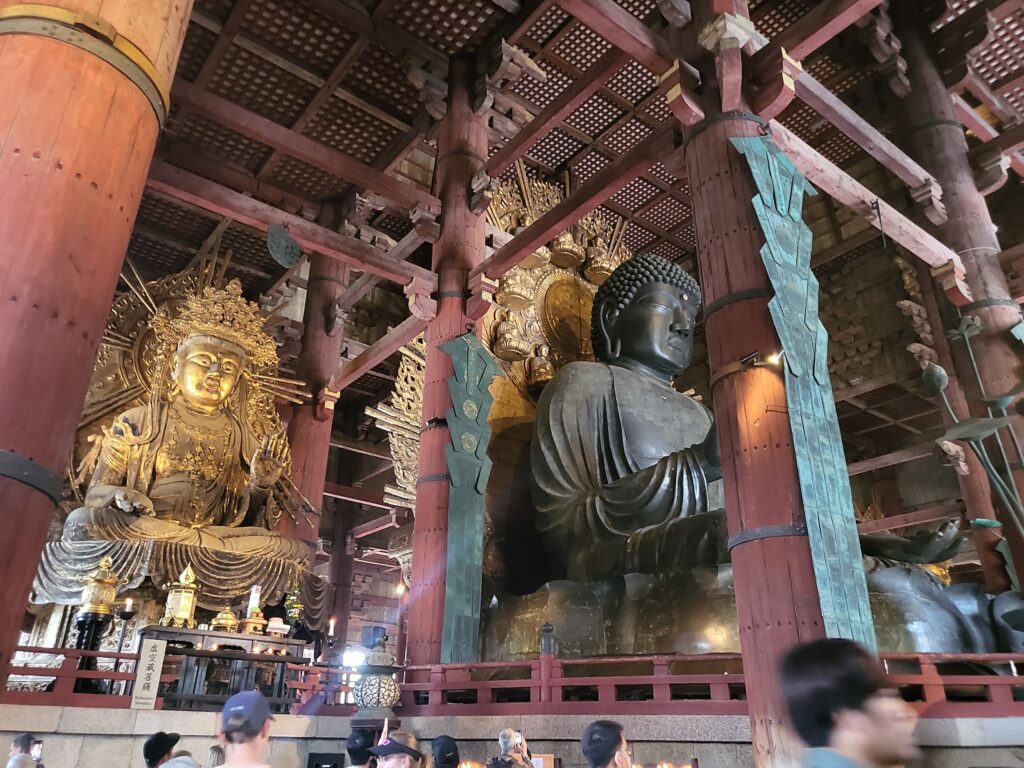
Todaji Temple
 I especially recommend this if you want to pray at shrines. When visiting a shrine, you will first enter through a large torii. Before you go through, you should bow once.
I especially recommend this if you want to pray at shrines. When visiting a shrine, you will first enter through a large torii. Before you go through, you should bow once.
Next, you will see a place to rinse your hands. To properly do this, you first pick up the ladle with your right hand and rinse your left. Then switch and rinse your right. Some also say to rinse your mouth, but I don’t see many people do this. 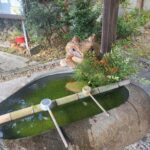 Then you set the ladle face down so the water is able to drain out. In general, this entire step is optional, especially during the colder seasons as it is outside and there’s no place to dry your hands.
Then you set the ladle face down so the water is able to drain out. In general, this entire step is optional, especially during the colder seasons as it is outside and there’s no place to dry your hands.
After heading farther into the shrine you will probably see a line heading to the main building. This will be where you can throw a coin in the offering box and make a request to the god(s) of the shrine. There are different ways to pray depending on the shrine you’re at, and there may be several smaller shrines within the one you’re at. But all you have to do is watch the people ahead of you! If there is no one to copy or you forget, I think the safe method is to throw your coin in (5 yen coin is recommended but not a must!), bow twice, clap your hands twice, keep your hands together as you make your prayer, and then bow once more. It sounds more complicated than it actually is. It is relatively quick and should only take about 15 to 30 seconds, depending on the length of your prayer.
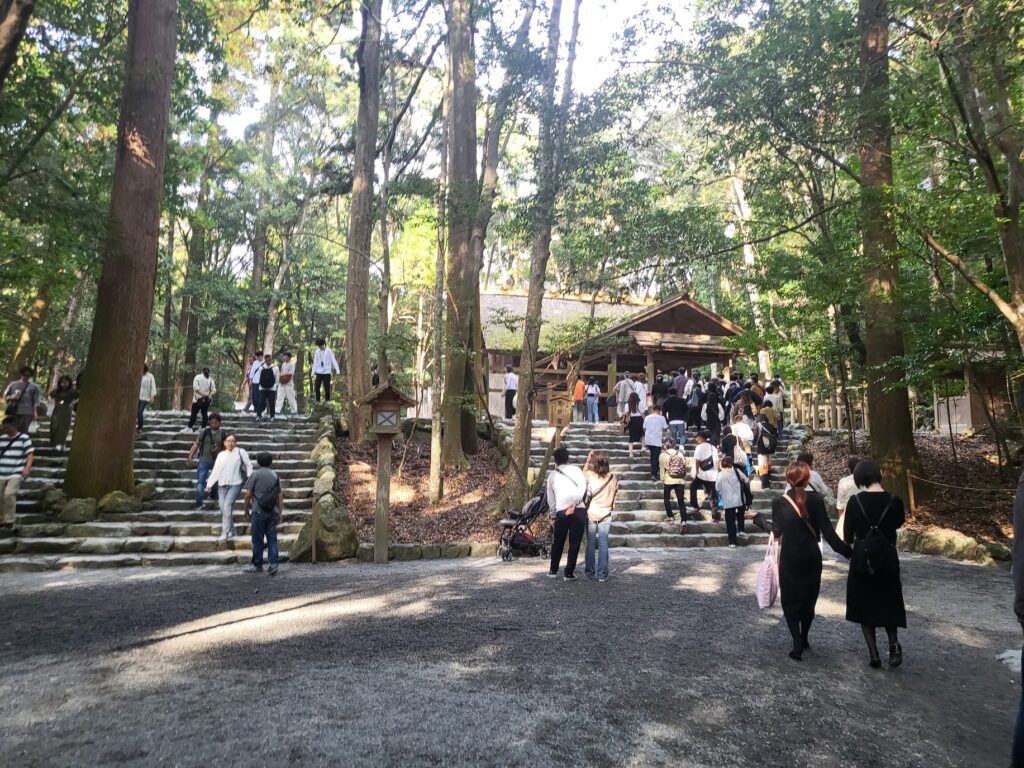
Ise Shrine
The last thing you should do is when you are leaving the shrine, you should bow one more time at the main torii gate. Walk through, turn to face the shrine, bow, and then you are done!
Japanese temples are much more relaxed in my opinion. It is sort of similar to a church, in the sense that it is the place for community within Buddhism. People go there to gather and pray. You do need to take your shoes off within the main building. You can leave them outside without having to worry about someone stealing them, or there are usually bags to put the shoes in if you want to carry them. Generally, the main building is a room with wooden floors or tatami matts for people to sit on. You can find an empty spot, sit, and pray. There are also offering boxes here!
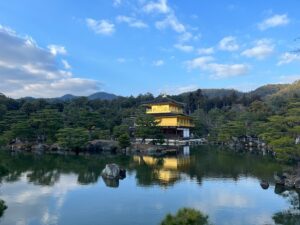
Kikakuji Temple
Note that photography is permitted throughout most of the shrine and temple grounds, however it is not allowed in the main buildings. There are always signs where it is not allowed, so just be aware and make sure to look out for it.
Also know, however, that Japanese people are incredibly forgiving when it comes to these things! They often don’t know the correct way to pray for certain shrines and also just copy other people. They also know you are a visitor and don’t expect you to know all of the rules. So, even if you mess up or forget a step, no one will be upset or really think anything of it! Don’t let fear keep you from seeing such wonderful places. You only need to show respect and a willingness to learn. Any Japanese person I’ve asked has told me this.
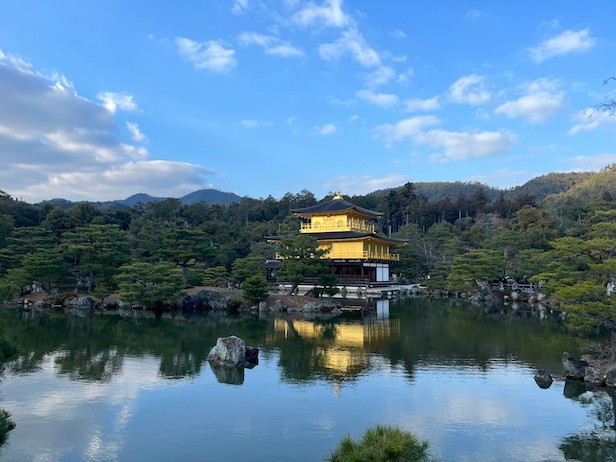 And that brings me to the cultural appropriation aspect of visiting Japan. A lot of people wonder if wearing a kimono is cultural appropriation or not. It is absolutely not. So long as it is done correctly.
And that brings me to the cultural appropriation aspect of visiting Japan. A lot of people wonder if wearing a kimono is cultural appropriation or not. It is absolutely not. So long as it is done correctly.
My Japanese friends have told me they view non-natives wearing the kimono as someone wanting to learn about their culture, and that they appreciate it. Again, so long as it is done the right way. There are tons of stores in Japan where you can rent kimonos for the day. The staff will fully dress you so that it is on correctly, and then when you return they will, of course, help you take it off. Just by doing this step, and having someone experienced put it on for you, you avoid most of the don’ts.
Some other things you should be careful of is accidentally folding the belt. Try not to lean back on anything while wearing a kimono, or else you might squish the bow that was intricately folded.
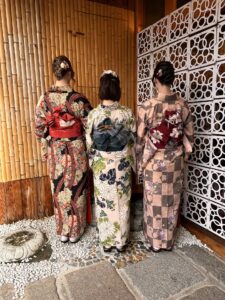
Avoid eating in it if possible! If you do need to eat, be careful not to spill anything on them, or else you might be charged for damages. Some restaurants will give you a special cover, like a bib almost, but I am not sure how many places offer this.
Then the obvious things: don’t be disrespectful, don’t say or do rude things, don’t make fun of the culture, don’t sexualize it, etc.
Wearing a kimono as an international visitor in Japan is about immersing yourself in and learning about the culture. And again, Japanese people are incredibly understanding and they love to hear that someone is learning about their culture. It is viewed as cultural appreciation, so long as it’s worn correctly and you act respectfully. If you ever don’t understand something or are unsure about something, just ask! I can’t say this for everyone, but all the people I have encountered have all been happy to help.